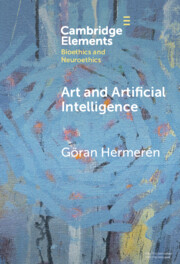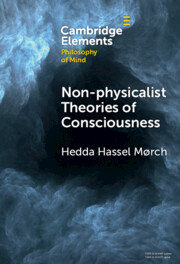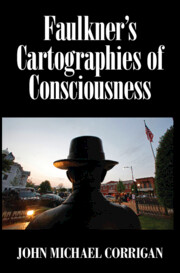213 results
Chapter 10 - Technological Fantasies
-
-
- Book:
- The Cambridge Companion to American Utopian Literature and Culture since 1945
- Published online:
- 09 May 2024
- Print publication:
- 16 May 2024, pp 185-200
-
- Chapter
- Export citation

Art and Artificial Intelligence
-
- Published online:
- 04 April 2024
- Print publication:
- 02 May 2024
-
- Element
- Export citation
The role of consciousness in Chinese nominal metaphor processing: a psychophysical approach
-
- Journal:
- Language and Cognition , First View
- Published online by Cambridge University Press:
- 15 March 2024, pp. 1-17
-
- Article
-
- You have access
- Open access
- HTML
- Export citation
19 - Children’s Rights, Childhood, and the Sovereignty of the Good
- from Part II - Ethics and Education in Practice
-
-
- Book:
- The Cambridge Handbook of Ethics and Education
- Published online:
- 07 March 2024
- Print publication:
- 14 March 2024, pp 400-421
-
- Chapter
- Export citation
Restoration of postictal cortical activity after electroconvulsive therapy relates to recovery of orientation in person, place, and time
-
- Journal:
- European Psychiatry / Volume 67 / Issue 1 / 2024
- Published online by Cambridge University Press:
- 14 February 2024, e16
-
- Article
-
- You have access
- Open access
- HTML
- Export citation
Affective Neuroscience: Jaak Panksepp's ‘rat tickling theory of emotion’
-
- Journal:
- BJPsych Advances , FirstView
- Published online by Cambridge University Press:
- 01 February 2024, pp. 1-4
-
- Article
- Export citation
9 - Disorders of Consciousness
-
- Book:
- Fish's Clinical Psychopathology
- Published online:
- 12 January 2024
- Print publication:
- 01 February 2024, pp 103-107
-
- Chapter
- Export citation
7 - Disorders of the Experience of Self
-
- Book:
- Fish's Clinical Psychopathology
- Published online:
- 12 January 2024
- Print publication:
- 01 February 2024, pp 80-85
-
- Chapter
- Export citation

Non-physicalist Theories of Consciousness
-
- Published online:
- 20 December 2023
- Print publication:
- 01 February 2024
-
- Element
-
- You have access
- Open access
- HTML
- Export citation
1 - Sustainable Development: A Personal and Societal Aspiration
- from Part I - Setting the Stage
-
- Book:
- Sustainability Science
- Published online:
- 07 December 2023
- Print publication:
- 07 December 2023, pp 3-16
-
- Chapter
- Export citation
Introduction
-
- Book:
- Faulkner's Cartographies of Consciousness
- Published online:
- 02 November 2023
- Print publication:
- 16 November 2023, pp 1-17
-
- Chapter
- Export citation
Chapter 2 - A Clock in Place of the Sun
-
- Book:
- Faulkner's Cartographies of Consciousness
- Published online:
- 02 November 2023
- Print publication:
- 16 November 2023, pp 43-72
-
- Chapter
- Export citation
Chapter 1 - Murder in the House of Memory
-
- Book:
- Faulkner's Cartographies of Consciousness
- Published online:
- 02 November 2023
- Print publication:
- 16 November 2023, pp 18-42
-
- Chapter
- Export citation

Faulkner's Cartographies of Consciousness
-
- Published online:
- 02 November 2023
- Print publication:
- 16 November 2023
Theoretical Neurobiology of Consciousness Applied to Human Cerebral Organoids
-
- Journal:
- Cambridge Quarterly of Healthcare Ethics , First View
- Published online by Cambridge University Press:
- 18 October 2023, pp. 1-21
-
- Article
-
- You have access
- Open access
- HTML
- Export citation
3 - Philosophy of Mind
- from II - The Never-Ending Debate
-
- Book:
- A Mind for Language
- Published online:
- 13 October 2023
- Print publication:
- 21 September 2023, pp 58-88
-
- Chapter
- Export citation
Brains and Minds
-
- Article
-
- You have access
- Open access
- HTML
- Export citation
Managing the clinical encounter with patients with personality disorder in a general psychiatry setting: key contributions from neuropsychoanalysis
-
- Journal:
- BJPsych Advances , FirstView
- Published online by Cambridge University Press:
- 09 August 2023, pp. 1-8
-
- Article
- Export citation
Brain Model Technology and Its Implications
-
- Journal:
- Cambridge Quarterly of Healthcare Ethics / Volume 32 / Issue 4 / October 2023
- Published online by Cambridge University Press:
- 27 July 2023, pp. 597-601
-
- Article
- Export citation



